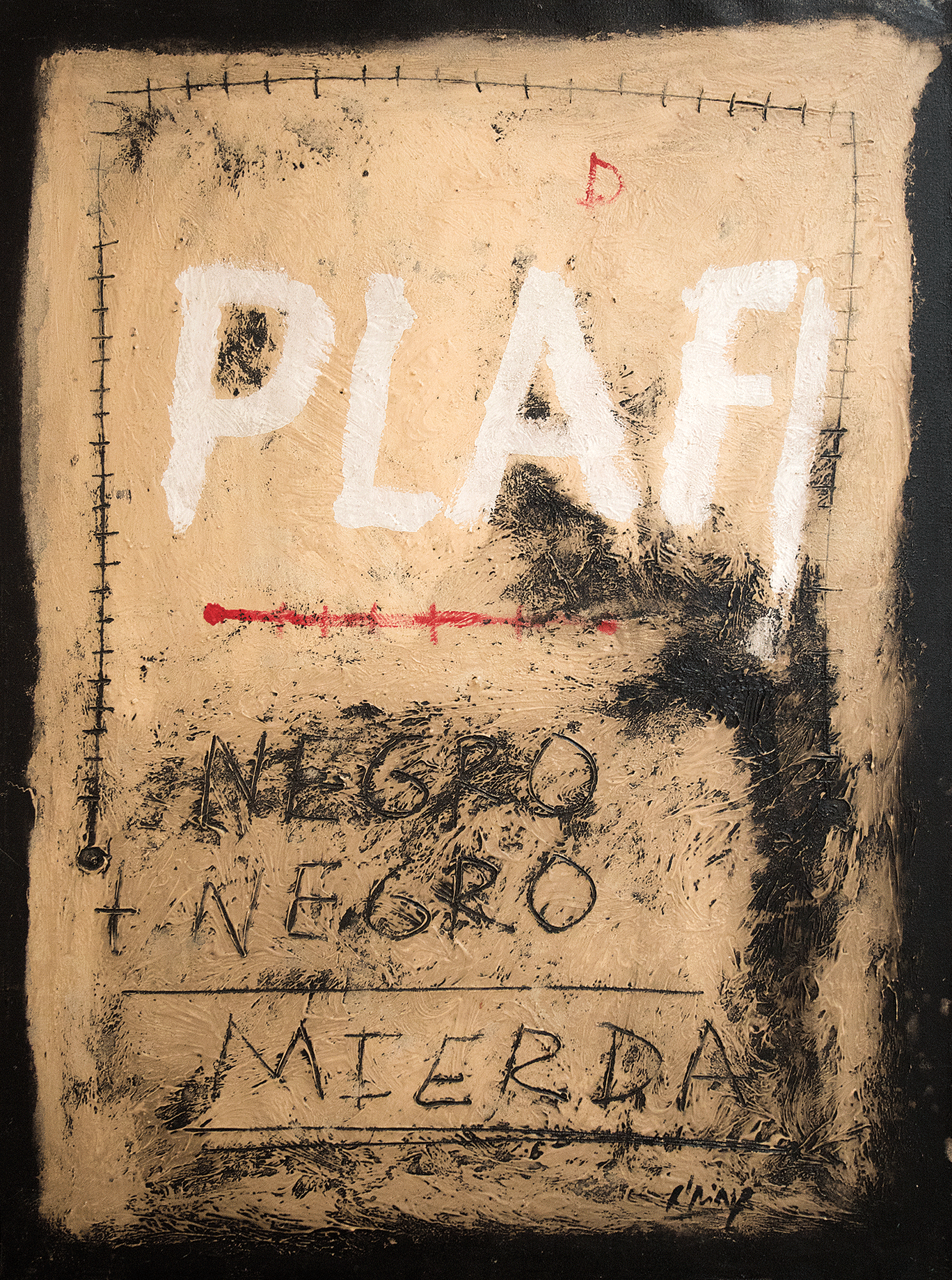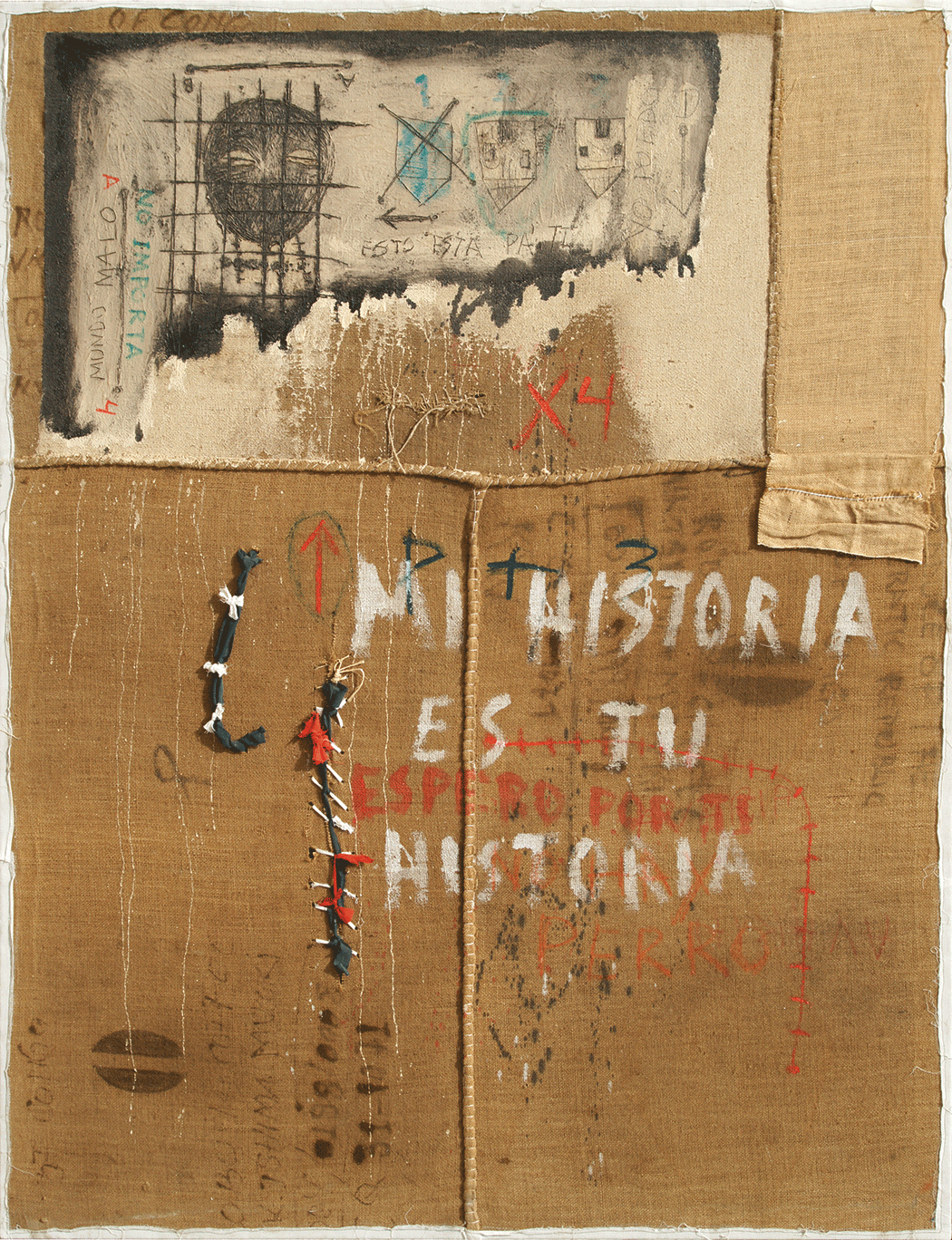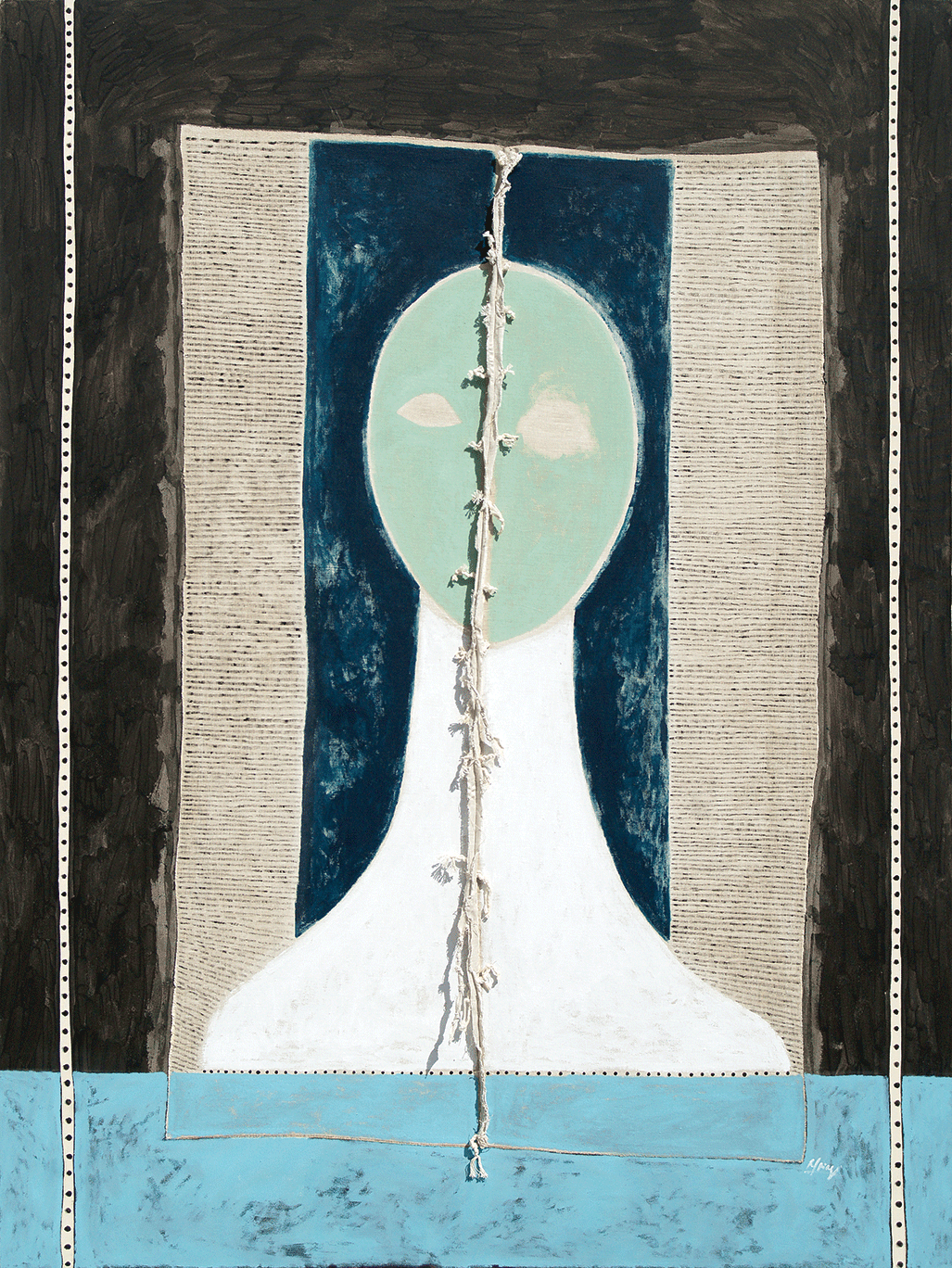« Reviews
Diago: The Pasts of This Afro-Cuban Present
Lowe Art Museum - Miami
Curated by Alejandro de la Fuente
What many of us do through art is cultural marronage
My attitude may seem aggressive, because my discourse works like a manifesto against racism. Beyond the social condition or the skin color of a man, I am interested in the integration of human beings.
Juan Roberto Diago, 2003
By Heike Dempster
Juan Roberto Diago’s work closely examines and engages with contemporary Cuba through an in depth analysis and understanding of Cuban history, past and current socio-political notions and cultural heritage. His work refuses to be seen through the dominant colonial or post-colonial lens, and he insists on claiming agency for Afro-Cuban voices. Maroons-descendants of Africans across the Americas-escaped life in slavery or were born in freedom in independent communities. By claiming his Afro-Cuban heritage and insisting on representing the island’s and the Diaspora’s African heritage, Diago and other contemporaries raise artistic voices that resonate beyond canvases and museum walls to engage in a politicized dialogue on race and racism that emerges from artistic exploration. One simply cannot frame contemporary life in Cuba or the Diaspora without an understanding of its history, rewritten through the arts by creators like Diago to reflect voices that have been previously omitted.

Juan Roberto Diago, Clase de Matemática (Math Class), 1999, mixed media on canvas, 31.5” x 22 1⁄2.” Courtesy of the artist.
With “Diago: The Pasts of This Afro-Cuban Present,” the Lowe Art Museum presents an exhibition of forty mixed-media and installation artworks from the mid-1990s to the present. This first retrospective of Diago’s works spanning his entire career presents a revisionist history of Cuba. It aims to reconstruct the past in order to explain and understand racial tensions of contemporary Cuba-an Afro-Cuban present.

Juan Roberto Diago, Mi Historia es Tu Historia (My History is Your History), 2000, mixed media on canvas, 89” x 68.” Courtesy of Cernuda Arte.
A leading member of the new Afro-Cuban cultural movement, Diago was born in Havana in 1971 into a family of artists, especially his grandfather who was an important influence. He graduated from the San Alejandro Academy in Havana in 1990, and began to exhibit soon after, including the Venice Biennale in 1997, the National Museum of Fine Arts in Havana, the Cisneros Fontanals Art Foundation in Miami and the Rubin Foundation Collection in New York.

Juan Roberto Diago, El Hombre Azul (The Blue Man), 2009, mixed media on canvas, 78 3⁄4 x 59. Courtesy of Private Collection of Ioanna and Alexander Niejelow.
What unifies Diago’s oeuvre has been his reflection on Cuban history and society, and his criticism of racism in Cuba, a nation built on centuries of colonialism, slavery, exploitation and pain. Even though abolished in 1886, slavery and its effects on contemporary Cuba exist in the lives of millions of Cubans, especially the population of African descent, that has-despite continuous public denials-experienced a lack or upward social mobility based on racial discrimination and institutionalized racism. Works like Clase de Matemática (Math Class) from 1999, that shows the words “negro = mierda” sprawled across the canvas quite literally spell out Cuban race sentiments.

Juan Roberto Diago, Ciudad en Ascenso (Ascending City), 2010, installation, wood, variable dimensions. Courtesy of the Artist and Magnan Metz Gallery, New York.
Cuba’s struggles as a post-colonial society as it relates to race can be observed across the region. The economic results are connected to history, migration patterns and local opportunities, which disproportionally place Afro-Cubans at a disadvantage, contribute to the perpetuation of racial stereotypes and prejudices. Diago started his artistic practice in the 1990s at a time of continuous racial discrimination and propagation of an ideology of black inferiority.
Part of Diago’s claiming of agency is clearly represented by the presence of the people in his work. There is a presence of their spirit. Their importance and their voices are elemental, whether literally with a central figures as seen in Sin Título (Untitled), 2011; El Hombre Azul (The Blue Man), 2009 and Rostro sin nombre II (Nameless Face II), 2019 or De la serie Motivos del Bosque (from the Motifs of the Forest) series, 1993, or conceptually through portrayal to daily life, historical impact, language and cultural references such as the many mentions of African syncretized religions and deities.

Juan Roberto Diago, Variaciones de Oggun. Yo y Mis Cosas (Oggun’s Variations. Me and My Things), 2013, mixed media on metal 78” x 59” x 2 1⁄2.” Courtesy of the artist.
Diago employs grids in most of his works. The network of lines connects and divides the canvases and other surfaces, representative of structure-albeit not an equal one-and interconnectivity. The lines, grids or parcels of space hint at the structure and divisions of life, how space is claimed by various peoples, but also at roots running below and across surfaces. Separating lines mark new points of departures and touch points where lives and believes and experiences intersect or at least graze each other.
Diago’s use of materials further explore living conditions of Afro-Cubans, and add multiple layers of conceptual and visual depth. His use of materials such as metal, rusted zinc, wood and burlap in pieces like Ciudad en Ascenso (Ascending City) from 2010 or De la Series Variaciones de Oggun, No. 1 (From the Series: Oggun’s Variations, No.1) from 2013 challenge perceptions and stereotypes that threaten to stay prevalent once race becomes synonymous to social status. “When I use certain ephemeral or poor materials in my work, I do it exclusively to highlight by analogy the precarious world in which the black person has been forced to live, what we have inherited from slavery, how we live, what are our dreams,” he said.
Diago claimed his ancestry and cultural heritage as a source of power, pride and knowledge early on in his career. Like many of his contemporaries, he used his art as a way to express and articulate frustrations and anger, as well as concerns about racism and its impact. Artists-whether painters, musicians, or writers-of African descent increasingly saw their work as a powerful vehicle to reclaim and rewrite history and contribute to a conversation, but also activism to bring forth significant change. Many of the artists incorporated or sought inspiration from 1990s hip hop, whether aesthetically or conceptually. In Diago’s work the influence of graffiti is evident. Many of his works incorporate text and many larger pieces resemble portions of walls with graffiti text across, such as the aforementioned Clase de Matemática (Math Class), 1999 and Mi historia es tu historia (My History is Your History), 2003.

Juan Roberto Diago, Serie Heridas (Wounds Series), 2015, mixed media on canvas, 78” x 59.” Courtesy of the artist.
Even in his color choices, Diago often sticks to the colors of the earth, connected to heritage and ancestry. Many of his works seem to have been caught on fire, or affected by forces of nature, weathered and torn by lives lived. Text in blood red or charcoal appears as if a remnant of rebellions past, of spilled ancestral blood had seeped into earth and into the very fibers of the canvases. Every work represents history but not the way it was told before. These reimagined pasts, forged from painful truths, they are authentic and inform an Afro-Cuban present that will shape a Cuban future.
(October 24, 2019 - January 20, 2020)
Heike Dempster is a writer, photographer and communications consultant based in Miami. After graduation from London Metropolitan University, she lived and worked as a music, art and culture publicist, journalist, and radio host and producer in Jamaica and the Bahamas. She is a contributing writer to ARTPULSE, ARTDISTRICTS, Rooms, MiamiArtZine and other local and international art publications, websites and blogs.
Filed Under: Reviews



































Leave a Reply
You must be logged in to post a comment.